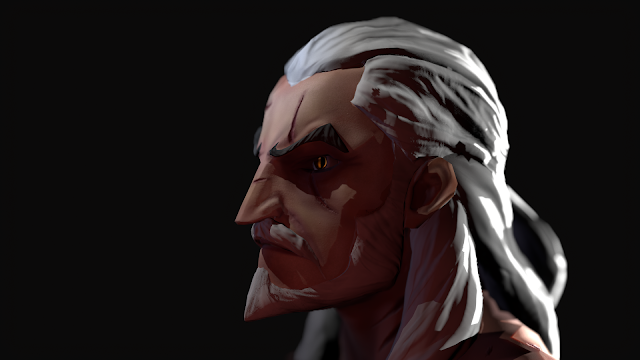I tried to bring the model into Marmoset Toolbag, and attempt to bake it here, but it was easier to export the textures from Substance Painter and plug them in to the low poly model in Marmoset, as they still retained the bake information. When exporting the texture maps, I learnt how to configure my own presets, e.g. combining certain maps like roughness, AO, metallic. However, instead of making my own preset I used the Unreal 4 preset which combined these maps.
Initial attempt baking in Marmoset

I went into photoshop to see how the maps had been distributed into Red, Green and Blue channels respectively. I then went into marmoset, and began setting up my materials. I had to invert the Y channels so that they appeared as I had textured them, and then I went on to altering the sky light.
I wanted to play around with forest lighting, which is a setting that would be seen in the Witcher 3. I also experimented with Subsurface Scattering, which reacted to the warm rim light I used at the back of the head. The ears had a slight transparency to them which mimicked the effects of light hitting skin. Although there wasn't a realistic level of SSS, it added a noticeable reddish hue and lifelike depth to the surface of the skin.
Plugging in the maps
Adding a shadow plane and a sky light
Rim light
Experimenting with a top light
Altering lighting colours
Finally, I moved several cameras into the correct positions that I wanted to take my renders from, and experimented in the settings. Here, I altered the Depth of Field, focus levels and aperture. I also altered the contrasts and saturation. I was very pleased with the results of these renders, as I feel that the lighting and camera angles and level of focus enhances the best qualities of the model. I ensured that I took different render shots with different sunlight positions to see which ones I preferred.
Overall, this personal project was a huge challenge, but I learnt how to meld the processes I learnt in class altogether to create my own piece of work inspired by other artists. Although it is a piece of fanart and not my original character, this piece has taught me how to translate ideas into my own style and to add my own flair.
Final Renders




















































